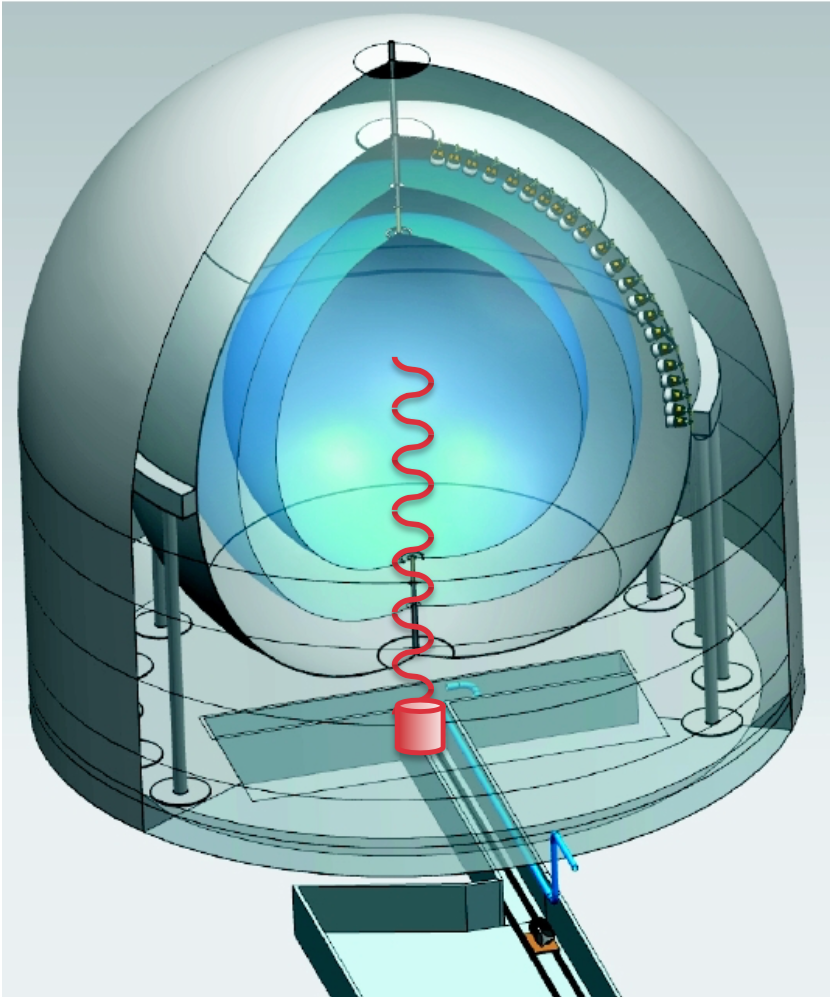The ZDFK group of SOX project take part in the quest for the 4th neutrino species and signals of non-standard particle physics.
1. Research project objectives/ Research hypothesis
The scientific goal of this project is the search for signals on non-standard particle physics by looking for neutrino oscillations into sterile neutrinos. It is proposed to realize an experiment sensitive to a large fraction of the parameter space for short distance neutrino flavor oscillations into sterile components. The experiment, named SOX (Short distance Oscillations with boreXino), aims at the complete confirmation or at a clear disproof of the so called neutrino anomalies, a set of circumstantial evidences of electron neutrino disappearance observed at LSND, MiniBoone, with nuclear reactors and with solar neutrino Gallium detectors. The SOX project has been awarded by ERC Advanced Grant (Project Reference: 320873).
If new generations of particles do exist, it is plausible that new neutrino species exist as well, and mixing with known active neutrinos might occur. This scenario, though speculative, is supported by a set of non-conclusive but very significant experimental evidences coming both from particle physics and from cosmology. On one side, several experiments probing neutrino and anti-neutrino oscillations at relatively small values of L/E have observed a systematic lack of events in their detectors, a fact which might be explained in terms of neutrino oscillations into an unknown very weakly interacting component. On the other side, Cosmic Microwave Background Radiation (CMBR) experiments and Large Scale Structure (LSS) studies, when interpreted in the framework of standard cosmology, indicate that the total number of neutrinos in the Universe might be bigger than three.
2. Research project methodology
The BOREXINO detector, originally designed for precision study of low energy solar neutrinos and for the detection of anti-neutrinos originating from the Earth or from unknown astrophysical sources, is an ideal apparatus for the search of sterile neutrinos, both in neutrino and anti-neutrino mode. The experiment will be done by placing a well-designed artificial neutrino sources (51Cr, 144Ce-144Pr) close or inside the BOREXINO solar neutrino detector at the Laboratori Nazionali del Gran Sasso. The superb BOREXINO sensitivity, its large size, and very low radioactive background will be the key elements of the experiment. The well proved capability to detect both low energy electron neutrinos and anti-neutrinos make an ideal case for the study of short distance neutrino oscillations with artificial sources. 51Cr decays via electron capture into 51V, emitting two neutrino lines of 750 keV (90%) and 430 keV (10%), while 144Pr decays β into 144Nd with an end-point of 3 MeV. SOX will yield additional physics. The electroweak angle θW can be directly measured at MeV scale from the νe-e− cross-section with an expected precision of 2.6%.
3. Expected impact of the research project on the development of science, civilization and society
SOX project has the potential to discover hypothetical sterile neutrinos. The discovery of the fourth family of neutrinos may be of fundamental importance for the theory of particles and for cosmological models. The precise measurements of the electroweak theory parameters at low energies will be performed.
